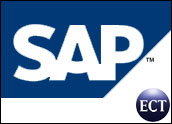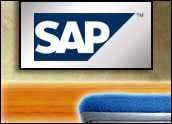
SAP has unveiled its hosted customer relationship management application, putting an end to the recent flood of speculation about when it would arrive and what it would look like.
Called SAP CRM on-demand solution, it is a hybrid application that allows users to move to an on-premise system with little difficulty.
We Were First
Siebel’s OnDemand product also offers a hybrid path to deployment. SAP claims its product is the first true hybrid application, though, because of its architecture. SAP pioneered the “isolated-tenancy” model, a departure from the multi-tenant concept that underlies Siebel OnDemand, Salesforce.com,NetSuite and other offerings.
SAP’s isolated tenancy concept combines the best points of a single-tenancy approach with a multi-tenancy approach, according to the company. With the former, the data and system essentially belong to the customer, while the latter is better able to leverage economies of scale.
“It is a version of hosted software in which each client ‘instance’ is separated from the other,” Ellen Minter, a senior vice president of solutions marketing at SAP, told CRM Buyer.
“Instance” refers to each individual company deployment of the application.
That means there are no brownouts during peak periods to cause users difficulty in signing in or to suddenly kick them off, she said.
“With an isolated tenancy, there is no chance of anything one customer might do [affecting another],” she said.
The end user’s data is not on a shared hardware database platform, Yankee Group Analyst Sheryl Kingstone noted. “That is a good thing for the customer, because it means better scalability and better service level agreements,” she told CRM Buyer.
Kingstone likes SAP’s approach — especially as it appears as though SAP is bearing the additional cost of this architecture and not the customer — but she is withholding final judgment until she sees it live. She also wants to know more about how well the hosted version integrates with earlier SAP legacy systems such as R/3.
“I am sure it can be done,” Kingstone said. “The question is, how easy would it be, and how much would it cost?”
Also of concern is how easy it will be to roll out upgrades — which SAP says it will do on a quarterly basis — and whether the individual customizations a company makes to its system will automatically follow the upgrades.
It will be a seamless processes for the end user, Minter told CRM Buyer. “It will be pushed out to all the instances so there are no disruptions.”
Functionality Issues
One aspect of SAP’s new product is clear, though, at least to Kingstone: It doesn’t have enough functionality to meet the needs of enterprise users, a customer base SAP is clearly targeting.
The version SAP introduced on Thursday is largely a sales force automation application. SAP plans to release a marketing application and then a service application in the coming months, Minter said. Also, with each upgrade it plans to enhance the SFA features already introduced.
Right now, though, the features are not well suited to an enterprise operation, Kingstone said. “The forecasting needs to be far more robust — that is a key demand for large enterprises.”
Most enterprises require systems that support sophisticated sales methodologies — even multiple methodologies, she pointed out. It appears that in these situations, SAP would prefer for the customer to be on the on-premise application, she added.
SAP is working with customers to ensure that their requirements will be incorporated into future upgrades, Minter said.
The Siebel Model
SAP may shun comparisons of its product to Siebel OnDemand, but in one respect parallels can be drawn: SAP, like Siebel, wishes to stop the migration of its customers to other on-demand providers.
Many SAP customers have moved to Salesforce.com, Kingstone noted. “Initially, it appears as though SAP will be targeting SAP customers,” she said.
Perhaps the incumbent vendors sensed this already — or perhaps they have refined bravado to a high art — but few direct competitors of the SAP hosted application expressed concern about this latest market entry.
Salesforce.com has racked up a number of large-seat deals including Merrill Lynch, Cisco, Sprint, Staples, AON, Symantec and ADP, which currently has approximately 6,600 hundred users, Salesforce.com’s Vice President of Corporate Strategy Bruce Francis told CRM Buyer.
“We’re gratified that legacy enterprise software giants like Microsoft, Oracle and SAP are dabbling in on-demand,” he remarked. “It validates what we have been saying for years.”
Most companies, especially enterprise-sized firms, are not interested in stand-alone apps that must be integrated into an enterprise resource planning (ERP) system, noted NetSuite CEO Zach Nelson.
SAP is making a surprising mistake by thinking software as service is a ‘CRM-only’ phenomenon,” he said. “I’m fine with SAP not addressing the back office, because they will be leaving the fastest growing segment of the on-demand market — the ERP market — to NetSuite.”
The SAP Sales on-demand solution will be offered to customers on a per-user, per-month pricing schedule. It is available globally with initial language options in English and German. Versions in French, Japanese, Portuguese, Spanish and Chinese will be rolled out over the next 90 days.
























































Social CRM
See all Social CRM